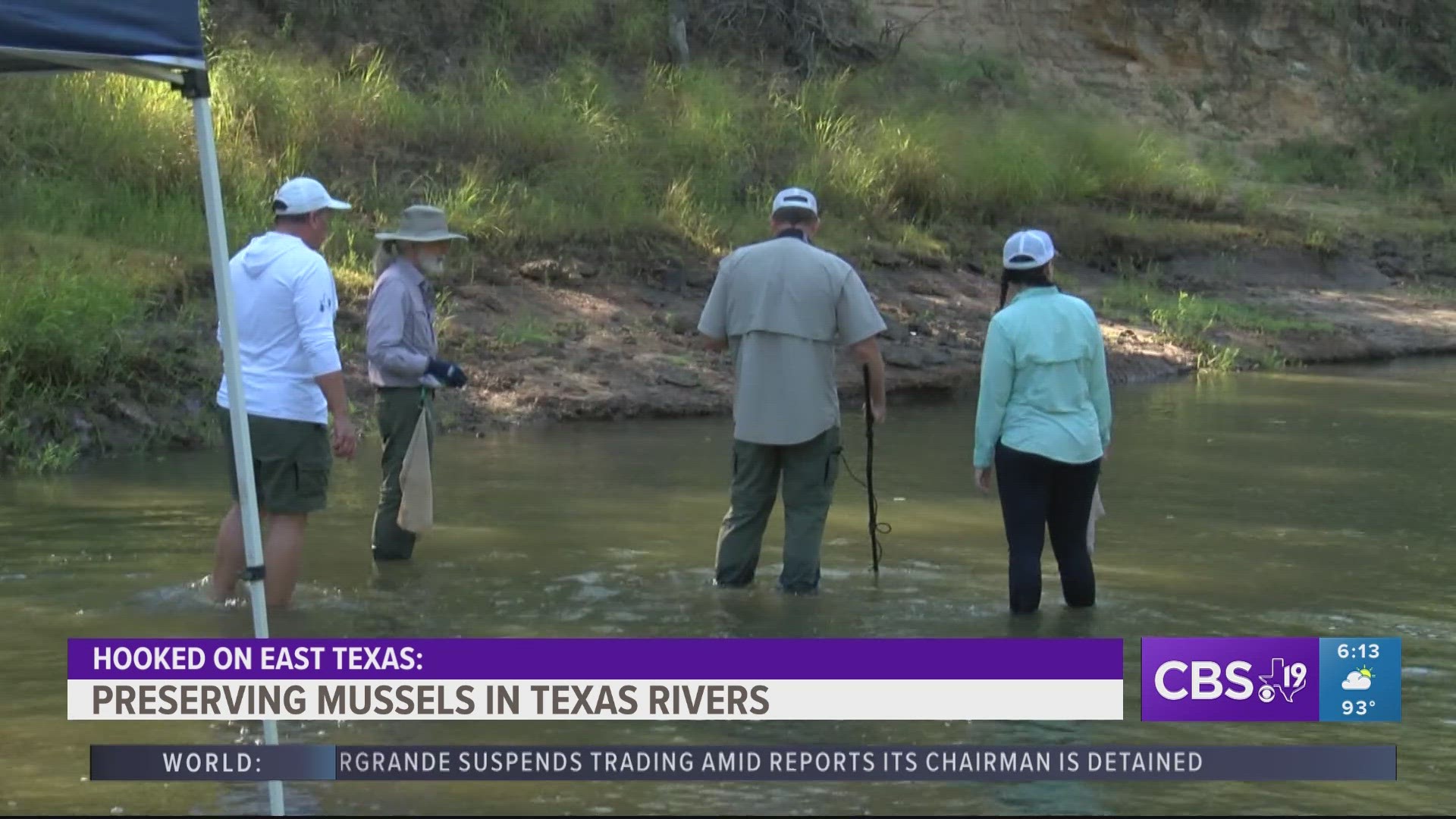GLADEWATER, Texas — A pair of freshwater mussels could be in danger in East Texas rivers and streams. That’s what this team of UT Tyler researchers wants to find out.
“I think it's surprising how, honestly, how little everybody knows about them. But how important they are”, said graduate biology student Rachel Leicher.
She knows mussels do the heavy lifting when keeping streams clean.
“They play such a big role in water chemistry and clarity. They help all these other creatures that are like in the ecosystem and rivers," Leicher said.
But habitat loss, a changing environment and natural predators are pushing two species of mussels in East Texas to the brink. The Texas Heel Splitter is likely headed for the endangered species list and the Louisiana pigtoe could be designated as threatened.
“So it will be a species of special concern," said Jared Dickson, lead researcher on this project. "We want to monitor those individuals and make sure the populations are healthy. And then two, mussels overall are just very important to the river ecosystem."
Researchers tag mussels with microchips. Then, once a year, the team comes back to the same location. Biologists recapture the tagged mussels using a handheld scanner. The mussels are measured and records are kept.
Scientists need to know if mussels are multiplying or if their numbers are declining.
“That's important to know, because if you're going to look at survival of these over the long term, which is what fish and wildlife is interested in, you got to know what you what you're starting with," retired biology professor Dr. Neal Ford said.
Ford started similar research on the Neches River a decade ago. He found the Louisiana pigtoe abundant on the Neches, but it appears to be different story on the Sabine.
“I think on in the Sabine, they're probably in a bit of trouble, because there's only a few spots where we found this kind of numbers," Ford pointed out.
Why? Construction of dams for recreation and flood control prevent mussels from migrating to new locations and climate change is also to blame.
“So I think East Texas is predicted to be hotter and wetter. So that may influence how these populations react to their environment. In terms of growth and survival," Dickson said.
Leicher added the mussels are threatened by climate change, saying as the rivers get warmer, these animals can only tolerate so much.
That adds urgency for the Texas Heelsplitter and the Louisiana Pigtoe. The findings from this study will be sent to U.S. Fish and Wildlife. The agency has the ultimate say whether these species of mussels need special protection.
“So we'll carry it back to the university, and then we'll analyze it, they're looking at the recapture part of it. And of course, we can, you know, we'll try to write up a paper and push that information out into the scientific community," Dickson said.
When will we know whether the Texas Heelsplitter and Louisiana Pigtoe get federal protections? Research wraps up in about three years. It'll be up to U.S. Fish and Wildlife to make the final determination.

